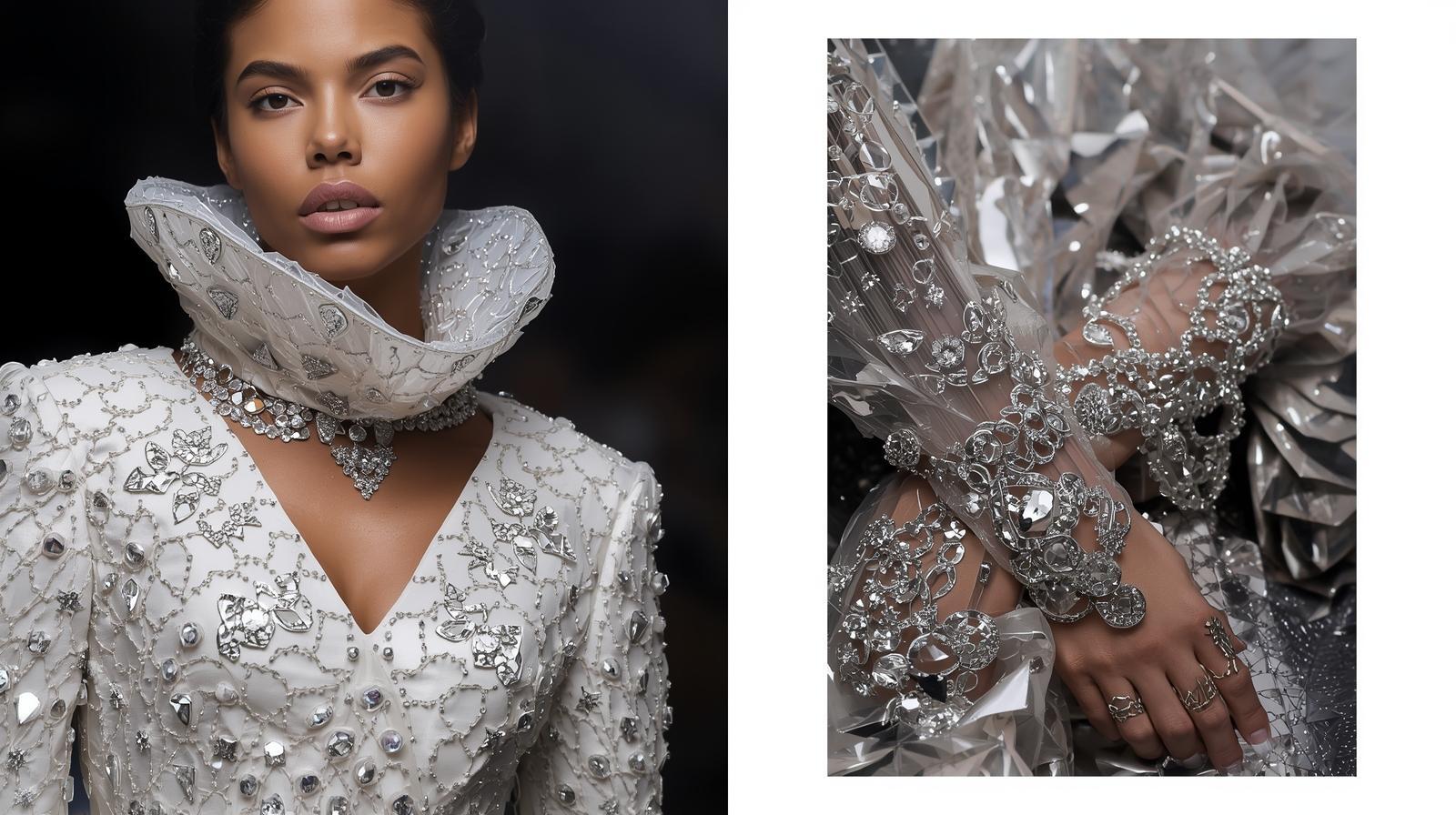11th Nov 2025
Crystal Geometry – Structured Embellishment Meets Precision Design

It's important for you to understand how crystal geometry blends structured embellishment with precision design, creating a fascinating intersection of art and science. By exploring the intricacies of geometric shapes and their reflective properties, you can enhance your appreciation for the beauty and functionality of crystal designs. This post will explore into the principles behind crystal geometry, highlighting how these elegant structures serve both aesthetic and practical purposes in various applications, from architecture to jewelry, demonstrating their impact on the modern world.
Understanding Crystal Geometry
In design and aesthetics, understanding crystal geometry is fundamental to harnessing the unique properties and visual beauty of various crystals. By exploring the symmetrical arrangements and angles that define a crystal's structure, you can appreciate how these characteristics influence everything from light refraction to overall visual appeal. Crystals embody a delicate balance between elegance and complexity, making their geometric forms a vital consideration in precision design.
Definition and Fundamentals
Crystal geometry refers to the spatial arrangement of atoms within a crystal lattice, defined by specific geometric shapes and angles. Each crystal class exhibits distinct internal arrangements that determine its symmetry and physical properties, such as hardness and optical behavior. Understanding these relationships enables you to select the right crystal for your design needs, ensuring both functionality and aesthetic harmony.
Historical Context and Significance
Throughout history, the study of crystal geometry has shaped various fields, including mineralogy and architecture. Ancient civilizations, like the Egyptians and Greeks, valued crystals not only for their beauty but also believed in their metaphysical properties. The development of crystallography in the 17th century, particularly through figures like Johannes Kepler and René Just Haüy, laid the groundwork for modern science, marking significant advancements in how you perceive natural formations and their applications in technology.
The historical significance of crystal geometry became especially prominent during the Renaissance, when artists and architects began to integrate crystal forms into their works, symbolizing balance and harmony. The invention of the polarizing microscope in the 19th century allowed for the detailed examination of crystal structures, enabling advances in fields such as mineralogy and chemistry. The exploration of crystal geometry remains necessary to innovations in technology, as seen in the development of semiconductors and lasers. Your understanding of this rich history not only deepens your appreciation for crystals but also informs your design choices, merging past knowledge with present creativity.

The Role of Geometry in Crystal Design
The foundation of crystal design lies in geometry, where the arrangement of atoms and molecules directly influences the physical properties and aesthetic appeal of the final product. Each geometric configuration creates unique interactions among the faces of the crystals, impacting everything from light refraction to structural integrity. Your understanding of geometry will elevate your crystal design, guiding choices that enhance both beauty and functionality.
Basic Geometric Shapes in Crystals
In crystal design, basic geometric shapes, like cubes, octahedra, and tetrahedra, serve as fundamental building blocks. These forms not only define the crystal's external appearance but also influence its behavior under different conditions. You can see these shapes in everyday minerals such as quartz and pyrite, each showcasing the elegance of simplicity.
Advanced Geometric Configurations
Advanced geometric configurations, including fractals and polyhedra, offer unprecedented complexity and aesthetic appeal in crystal design. These intricate shapes can enhance the interaction of light within the crystal, producing stunning visual effects. You might explore designs inspired by nature, such as snowflakes or crystal branching patterns, which display both functionality and an organic beauty.
- Fractals enhance light dynamics.
- Polyhedra increase structural strength.
- Spherical configurations optimize growth.
| Fractal Design | Creates complexity and depth through self-repeating patterns. |
| Geodesic Forms | Maximizes strength while minimizing material use. |
| Branching Structures | Inspires natural forms, improving aesthetic and light interaction. |
Exploring advanced geometric configurations can lead to innovative designs that push the boundaries of traditional crystal aesthetics. By incorporating elements like hyperbolic shapes or complex tessellations, you can achieve unique optical effects, enhancing the functionality and beauty of your creations. Such intricate geometry not only captivates the eye but also reinforces the crystal's structural integrity.
- Use hyperbolic configurations for optical effects.
- Tessellations offer unique surfaces for light interaction.
- Experiment with non-linear shapes for innovative structures.
| Hilbert Curves | Generate complex, continuous patterns within a confined space. |
| Voronoi Diagrams | Create spatially efficient designs based on proximity. |
Applications of Crystal Geometry
The versatility of crystal geometry spans multiple disciplines, showcasing its significance in both industrial and aesthetic domains. From enhancing the performance of electronic devices to transforming spaces through artistic installations, the precision of crystal structures has profound implications for functionality and beauty.
Industrial Applications
In the industrial sector, crystal geometry plays a vital role in the manufacturing of high-performance components. For instance, piezoelectric crystals are integral in sensors and actuators, converting mechanical stress into electrical energy and vice versa. Additionally, the use of quartz crystals in oscillators ensures precise frequency stability in communication technologies, underscoring how structured designs can enhance operational efficiency.
Aesthetic Applications in Art and Decoration
Aesthetic applications of crystal geometry also significantly impact the art and decoration sectors. Artists and designers utilize the unique patterns and refractions of crystal structures to create stunning visual displays. For example, chandeliers crafted with meticulously cut crystals not only serve as lighting fixtures but also as centerpieces that refract and disperse light, filling spaces with a captivating ambiance.
In contemporary art, you will find installations that leverage the intricate designs of crystals to evoke emotion and provoke thought. Using geometric crystal sculptures, artists create immersive experiences that draw viewers into a dialogue with form and light. Galleries often feature works that emphasize the interplay between natural crystal formations and human creativity, making crystal geometry an emblem of modern artistic expression. This integration of precision design and aesthetic value highlights how crystals can transform environments and influence emotional landscapes.

The Intersection of Art and Science
The fusion of art and science in crystal geometry creates a unique platform for innovation, where creative expression meets analytical precision. By leveraging the principles of geometry, designers can evoke aesthetics while ensuring structural integrity and functionality. This intersection invites you to explore how sculptural forms can emerge from rigorous scientific techniques, bridging gaps between disciplines to produce compelling designs that resonate visually and serve practical purposes.
Collaborative Approaches in Design
Your collaborative efforts in design are necessary to harnessing the strengths of both artists and scientists. Interdisciplinary teams can share divergent perspectives, enabling innovative ideas to flourish. By embracing this synergy, you can find solutions that balance expressive design with the rigorous demands of material science, ultimately enhancing the transformative potential of crystal geometry in your projects.
Case Studies of Successful Implementations
Exploring real-world implementations offers valuable insights into the successful marriage of crystal geometry with various disciplines, showcasing the tangible impacts of your designs. These case studies highlight not only creative success but also measurable benefits, guiding your future projects by providing proven models of collaboration and innovation.
- Case Study 1: 'Crystal Pavilion' project showcased in 2019, resulted in a 30% increase in foot traffic to surrounding areas.
- Case Study 2: Use of crystal-inspired architecture in a 10-floor office building improved energy efficiency by 25%.
- Case Study 3: Collaboration with art installations led to a 15% engagement boost in local community events.
- Case Study 4: A series of crystal workshops increased local artisan revenue by 40% over six months.
Delving deeper into these case studies reveals profound insights into the practical applications of crystal geometry in design. For instance, the 'Crystal Pavilion' not only enhanced aesthetic appeal but significantly increased local business activity, underscoring the economic benefits of integrating art and science. Similarly, the energy-efficient office building exemplified how geometric principles can lead to substantial sustainability gains, making your designs not just visually striking but environmentally responsible as well.
Challenges in Crystal Geometry Design
The path to effective crystal geometry design is fraught with numerous challenges. You face a myriad of obstacles, from the limitations of available materials to the intricacies of alignment and growth patterns that affect the crystal's final properties. Each decision impacts not only aesthetics but also functionality, often resulting in trade-offs that can complicate the design process. Understanding these challenges is important for achieving optimal outcomes in your projects.
Technical Limitations and Innovations
You navigate a landscape of technical limitations that can hinder the creation of perfect crystal geometries. Innovations in crystal synthesis techniques, such as laser-assisted fabrication or advanced simulation tools, are paving the way to overcome these obstacles. Breaking through traditional constraints allows you to explore designs that were previously thought impractical, thus enriching your design toolkit.
Balancing Aesthetics with Functionality
Striking the right balance between aesthetics and functionality is often a daunting task in crystal geometry design. You have to ensure that the visual appeal of a crystal structure doesn’t compromise its operational effectiveness. For instance, in architectural applications, you may choose a design that maximizes light refraction while also maintaining structural integrity.
In practice, balancing aesthetics with functionality involves a careful analysis of the application context. For example, when designing a crystal chandelier, you might prioritize intricate shapes to enhance visual impact while ensuring that the weight distribution is optimal for safety and durability. Innovations like digitally fabricated crystals can further help you tailor designs, allowing for complex aesthetics without sacrificing strength or usability. Your ability to harmonize these elements can lead to truly groundbreaking designs that not only captivate the eye but also meet strict practical demands.
Future Trends in Crystal Geometry
Your understanding of crystal geometry is evolving, reflecting new materials and methods that enhance both functionality and aesthetic appeal. As research shifts towards integrating nanotechnology and biomimetic designs, you’ll see a rise in adaptive structures that respond dynamically to their environments. These advancements suggest a future where crystal geometries are not just visually stunning but also deeply interactive and programmable.
Emerging Technologies and Techniques
Innovations such as 3D printing and machine learning are revolutionizing the way you create and manipulate crystal geometries. Leveraging algorithms to predict optimal shapes and using advanced materials that can be synthesized at the atomic level, these techniques allow for enhanced precision and the exploration of new design possibilities. Expect to see more bespoke geometries tailored to specific applications, further blurring the lines between art and technical proficiency.
Implications for Various Industries
The impact of evolving crystal geometry extends across multiple domains, including electronics, architecture, and healthcare. As industries adopt advanced crystal structures for applications ranging from energy-efficient buildings to biocompatible implants, you can anticipate significant improvements in performance and sustainability. These developments pave the way for innovations that not only optimize existing processes but also introduce entirely new functionalities in products and systems.
Incorporating innovative crystal geometries into these industries creates tangible benefits. For instance, in electronics, new crystal structures can lead to faster, more efficient semiconductor components, potentially improving processing speeds by over 30%. Meanwhile, in architecture, adaptive crystal-based materials can regulate temperature and light, enhancing energy efficiency and occupant comfort. In healthcare, engineered crystals could revolutionize drug delivery systems, ensuring targeted therapy with minimal side effects. These implications underscore the transformative potential of future trends in crystal geometry across your professional landscape.
Conclusion
Presently, your understanding of crystal geometry highlights the intricate relationship between structured embellishment and precision design. By appreciating these elements, you unlock the potential to enhance your creations, ensuring they possess both aesthetic appeal and functional integrity. This harmonious balance not only elevates your projects but also positions you at the forefront of innovative design practices in the world of crystals.


